#saint matthew
Text
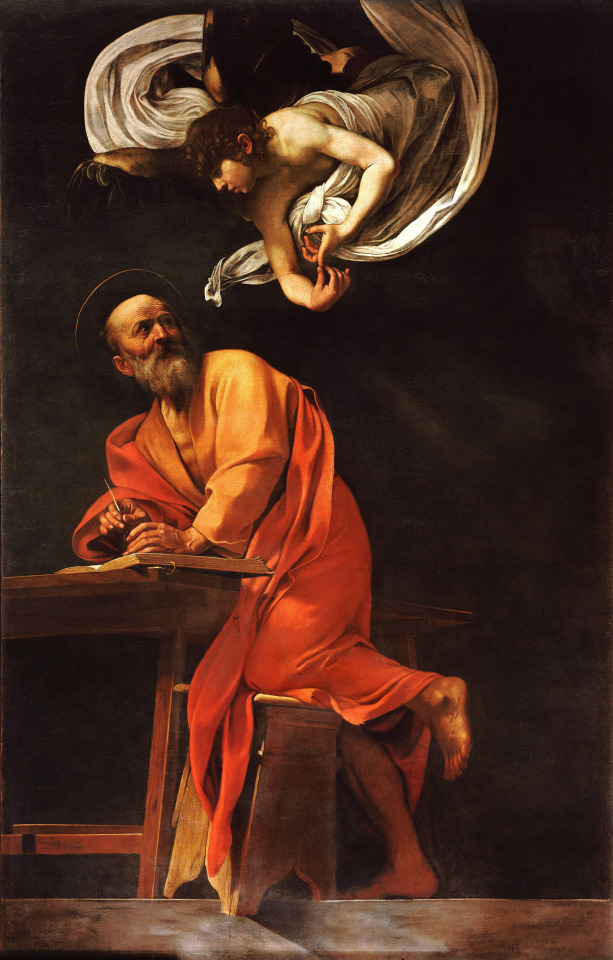
Caravaggio (Italian, 1571-1610)
Inspiration of St. Matthew, ca.1599-1600
Contarelli Chapel, San Luigi dei Francesi, Rome
#art#fine art#european art#classical art#europe#european#oil painting#fine arts#mediterranean#europa#caravaggio#italian#italian art#saint matthew#1500s#angel#christian art#christian#catholic#catholic art#1600s#heaven
540 notes
·
View notes
Text

St. Matthew the Evangelist (from The Four Evangelists), Frans Hals, ca. 1625
#art#art history#Frans Hals#religious art#Christian art#Christianity#Saint Matthew#imaginary portrait#Dutch Golden Age#Baroque#Baroque art#Dutch Baroque#Dutch art#17th century art#oil on canvas#Odesa Museum of Western and Eastern Art
171 notes
·
View notes
Text
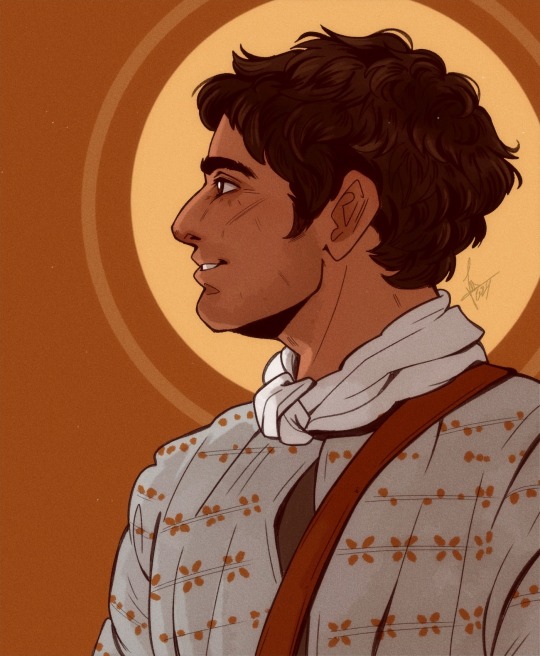

Saint Matthew
Another Matthew fanart from The Chosen! aka the one in my pfp that I really loved. He’s my favourite character in the show and I really liked how they portrayed him, giving him unique traits.
#art#digital art#the chosen matthew#the chosen tv series#the chosen tv show#the chosen#the chosen fanart#saint matthew#Bible#christianity
129 notes
·
View notes
Text
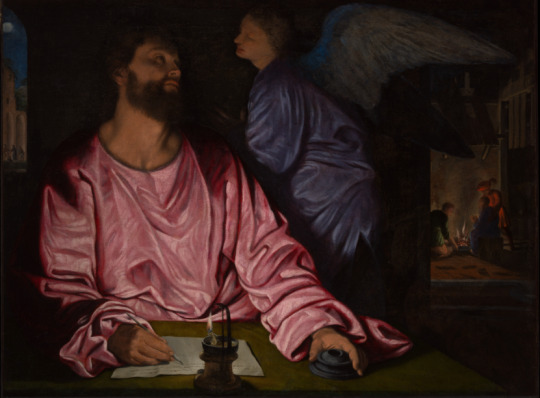


Saint Matthew and the angel, Giovanni Girolamo Savoldo, 1530-35
#art history#art#italian art#aesthethic#painting#16th century#savoldo#giovanni girolamo savoldo#met museum#saint matthew#angel#angelcore
36 notes
·
View notes
Text
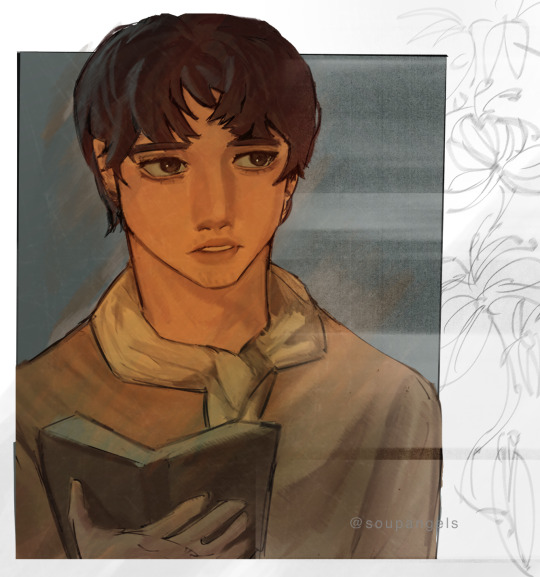
can someone assist me with hair but anyways heres matthew from the chosem
#the chosen#the chosen tv series#the chosen tv show#the chosen fanart#matthew#saint matthew#bible fanart#art
27 notes
·
View notes
Photo
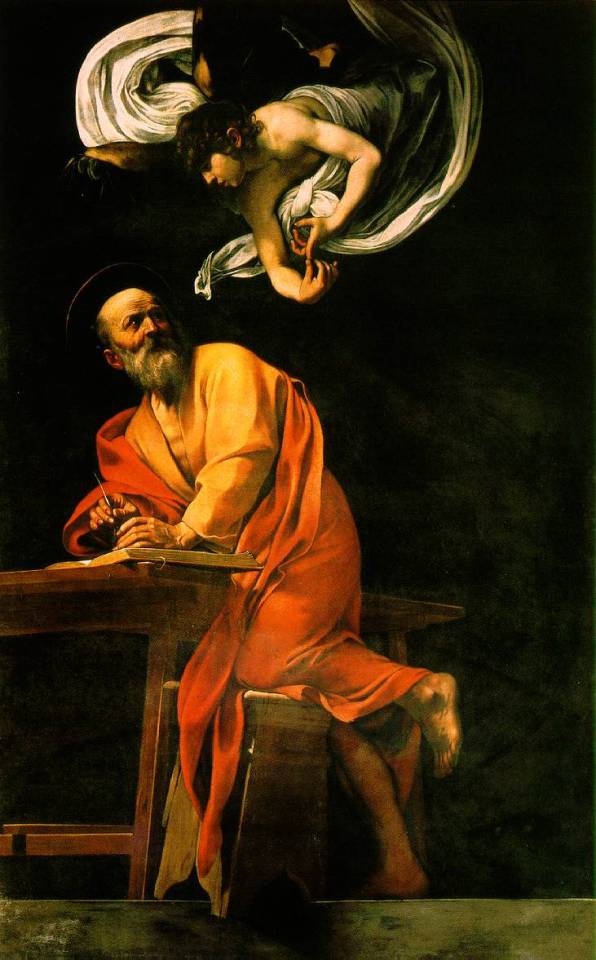
The Inspiration of Saint Matthew - caravaggio
61 notes
·
View notes
Text

The Inspiration of Saint Matthew, by Caravaggio
52 notes
·
View notes
Photo
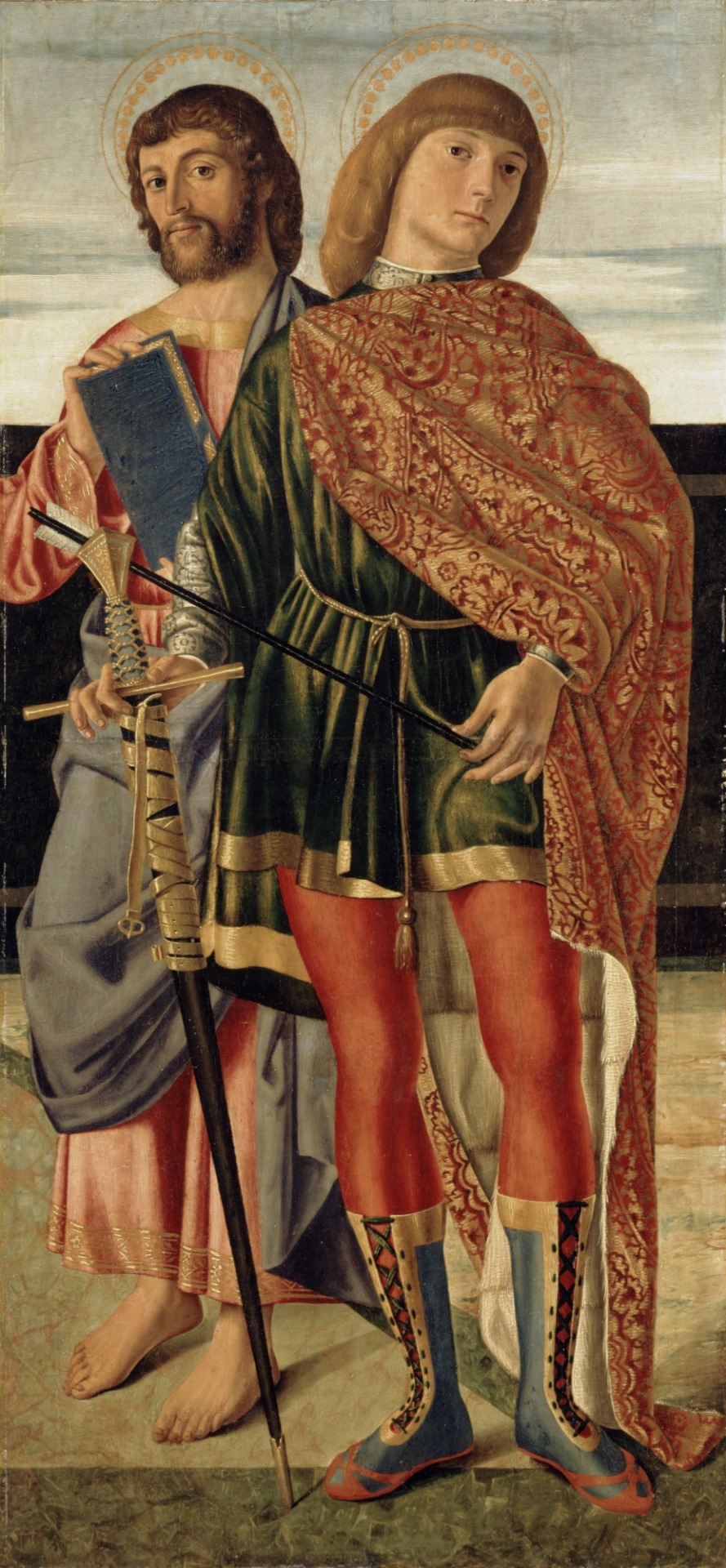
Cristoforo Caselli - Saint Matthew and Saint Sebastian. 1499
222 notes
·
View notes
Text
Finally started watching The Chosen.
So far, my favorite depiction of the Apostles is them making Matthew very clearly autistic.
15 notes
·
View notes
Text

Group two: the ones learning the Torah! Mary, Ramah and Matthew love reciting the Torah together!
#the chosen#Matthew the tax collector#Matthew the apostle#saint matthew#Mary Magdalene#ramah the chosen#my fanart#my drawing#chi is
14 notes
·
View notes
Photo
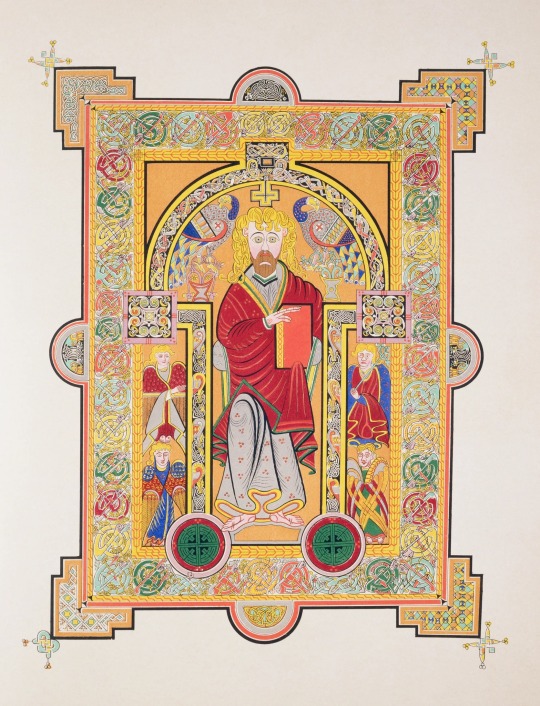
Saint Matthew from the Book of Kells, MS 58, folio 28v., Ireland, c 800 CE. Trinity College, Dublin, Ireland.
* * * * *
Matthew's face, with its vast, staring eyes and long, snaking yellow hair, has an ecstatic visionary aspect that transfixes. This Celtic evangelist is an enraptured, strange figure. His symmetrical features - the black arches of the eyebrows coiling into the outline of a pillar of a nose, the beard a perfectly balanced, mask-like shape - are not lacking individual features as a result of medieval clumsiness, but are emphatically cleansed of identity, transfigured into a divine, iconic generality. There is something unsettling and powerful about this face, as if transformed by knowledge into something inhuman. The hair, so wild, suggests intoxication rather than asceticism. The design of the page - the purple robe with its gold repeated device of three circles, the animal emblems of the other evangelists, the frame that literally squashes against him as it orgies in the compulsive repetition of organic yet balanced forms, the squares, circles, circles within squares and spiralling metallic forms - is suggestive of rhapsody, a sensuous delight in the scriptures, in copying, in visions experienced in silence in a remote community on a cold island. In his left hand, Matthew holds a book, an object of mystery and power. Its representation folds the act of reading back on itself; the Book of Kells is a monument to the idea of the book.
[Scott Horton]
* * * * *
“The writing, in huge insular majuscule script, is flawless in its regularity and utter control. One can only marvel at the penmanship. It is calligraphic and as exact as printing, and yet it flows and shapes itself into the space available. It sometimes swells and seems to take breath at the ends of lines. The decoration is more extensive and more overwhelming than one could possibly imagine. Virtually every line is embellished with color or ornament.”
― Christopher de Hamel, Meetings with Remarkable Manuscripts
#Book of Kells#Saint Matthew#religious art#Scott Horton#manuscripts#Christopher de Hamel#Meetings with Remarkable Manuscripts#quotes#decoration#Ireland#Irish
35 notes
·
View notes
Text
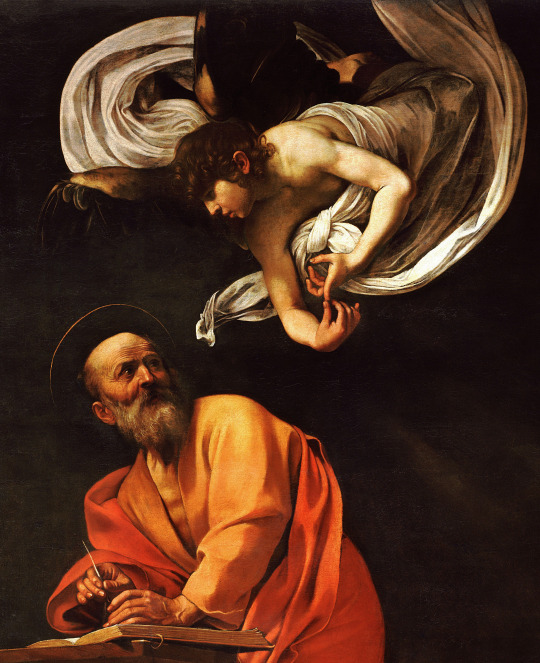
Caravaggio (Italian, 1571-1610)
Inspiration of St. Matthew, ca.1599-1600
Contarelli Chapel, San Luigi dei Francesi, Rome
#caravaggio#art#fine art#european art#classical art#mediterranean#europa#fine arts#european#europe#oil painting#inspiration of st matthew#1500s#1600s#angel#st matthew#saint matthew#saint#bible#christian art#christian#christianity#catholic#rome#italy#italian#italian art#southern europe
90 notes
·
View notes
Text

St. Matthew and the Angel, Nicolas Régnier, ca. 1622-25
#art#art history#Nicolas Regnier#religious art#Christian art#Christianity#Saint Matthew#angel#angels#Baroque#Baroque art#Flemish Baroque#Tenebrism#Flemish art#17th century art#John and Mable Ringling Museum of Art#oil on canvas
481 notes
·
View notes
Text
SAINT OF THE DAY (September 21)
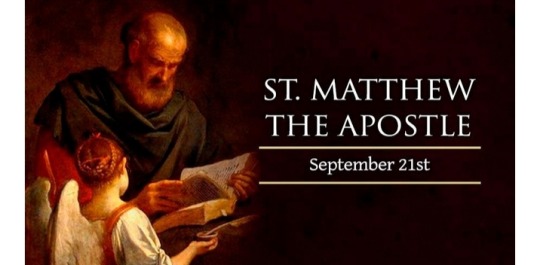
Saint Matthew, the first-century tax collector turned apostle who chronicled the life and ministry of Christ in his Gospel, is celebrated by the Church today, September 21.
Although relatively little is known about the life of St. Matthew, the account he wrote of Christ's ministry — traditionally considered to be the first of the four Gospels — is of inestimable value to the Church, particularly in its verification of Jesus as the Messiah.
Eastern Catholics and the Orthodox churches celebrate St. Matthew on November 16, along with St. Fulvianus, a prince who is recorded in some traditions as converting from paganism after Matthew's martyrdom.
The Gospel accounts of Mark and Luke, like Matthew's own, describe the encounter between Jesus and Matthew under the surprising circumstances of Matthew's tax-collecting duties.
Jewish publicans, who collected taxes on behalf of the Roman rulers of first-century Judea, were objects of scorn and even hatred among their own communities, since they worked on behalf of the occupying power and often earned their living by collecting more than the state's due.
Jesus most likely first encountered Matthew near the house of Peter, in Capernaum near the Sea of Galilee.
The meeting of the two was dramatic, as Matthew's third-person account in his Gospel captured:
“As Jesus passed on,” the ninth chapter recounts, “he saw a man named Matthew sitting at the customs post. He said to him, 'Follow me'. And he got up and followed him.”
Matthew's calling into Jesus' inner circle was a dramatic gesture of the Messiah's universal message and mission, causing some religious authorities of the Jewish community to wonder:
“Why does your teacher eat with tax collectors and sinners?”
Jesus' significant response indicated a central purpose of his ministry: “I did not come to call the righteous but sinners."
A witness to Christ's resurrection after death, as well as his ascension into heaven and the events of Pentecost, Matthew also recorded Jesus' instruction for the apostles to “go, therefore, and make disciples of all nations, baptizing them in the name of the Father, and of the Son, and of the holy Spirit, teaching them to observe all that I have commanded you.”
Like 11 of the 12 apostles, St. Matthew is traditionally thought to have died as a martyr while preaching the Gospel.
The Roman Martyrology describes his death as occurring in a territory near present-day Egypt.
Both the saint himself and his Gospel narrative have inspired important works of religious art, ranging from the ornate illuminated pages of the Book of Kells in the ninth century, to the Saint Matthew Passion of J.S. Bach.
Three famous paintings of Caravaggio, depicting St. Matthew's calling, inspiration and martyrdom, hang within the Contarelli Chapel in Rome's Church of St. Louis of the French.
Reflecting on St. Matthew's calling, from the pursuit of dishonest financial gain to the heights of holiness and divine inspiration, Pope Benedict said in 2006:
“In the figure of Matthew, the Gospels present to us a true and proper paradox: those who seem to be the farthest from holiness can even become a model of the acceptance of God's mercy and offer a glimpse of its marvelous effects in their own lives.”
6 notes
·
View notes
Text
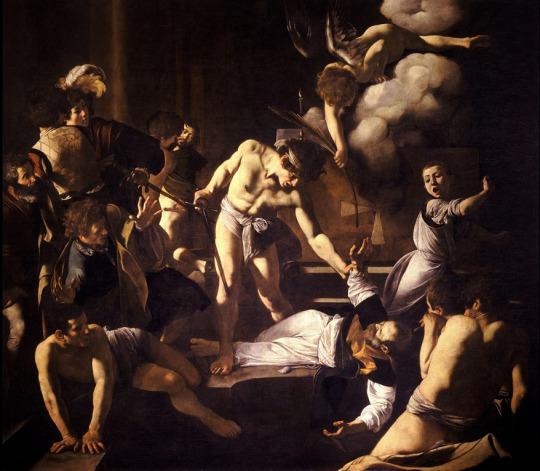

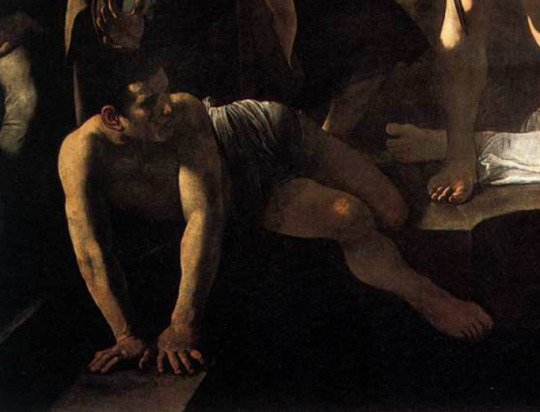
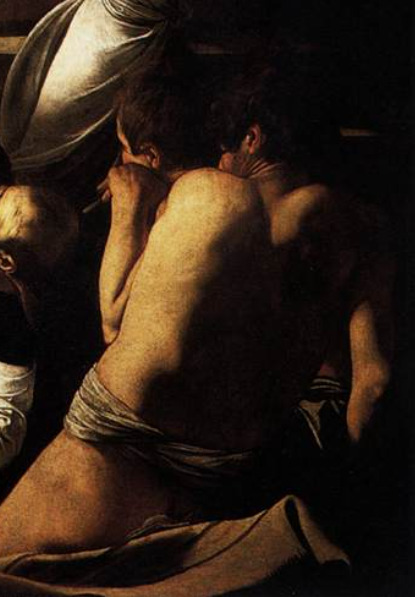
The Martydrom of Saint Matthew, Caravaggio (Michelangelo Merisi), 1599-1600
#art history#art#painting#italian art#17th century#baroque art#aesthethic#caravaggio#michelangelo merisi da caravaggio#saint matthew#the martydrom of saint matthew#dark academia#rome#san luigi dei francesi
18 notes
·
View notes
Text
on Matthew and Mary Magdalene
at first, I was no exactly thrilled with the ship tease considering the fact that these are real people who existed but after rewatching both seasons 2 and 3 (especially S2 E6 & 7 and S3 E1 & 7), these two have grown on me ngl and their interactions are heartwarming.
idk what direction Dallas is planning to take with these two: whether it would be reciprocated or one-sided and I have no issue either way. I just love their interaction.
11 notes
·
View notes